Resources
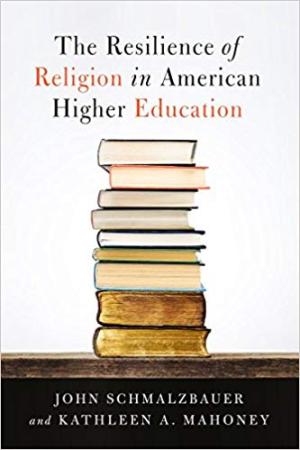
A well-worn, often-told tale of woe. American higher education has been secularized. Religion on campus has declined, died, or disappeared. Deemed irrelevant, there is no room for the sacred in American colleges and universities. While the idea that religion is unwelcome in higher education is often discussed, and uncritically affirmed, John Schmalzbauer and Kathleen Mahoney directly challenge this dominant narrative. The Resilience of Religion in American Higher Education documents a surprising openness to religion in collegiate communities. Schmalzbauer and Mahoney develop this claim in three areas: academic scholarship, church-related higher education, and student life. They highlight growing interest in the study of religion across the disciplines, as well as a willingness to acknowledge the intellectual relevance of religious commitments. The Resilience of Religion in American Higher Education also reveals how church-related colleges are taking their founding traditions more seriously, even as they embrace religious pluralism. Finally, the volume chronicles the diversification of student religious life, revealing the longevity of campus spirituality. Far from irrelevant, religion matters in higher education. As Schmalzbauer and Mahoney show, religious initiatives lead institutions to engage with cultural diversity and connect spirituality with academic and student life, heightening attention to the sacred on both secular and church-related campuses. (From the Publisher)
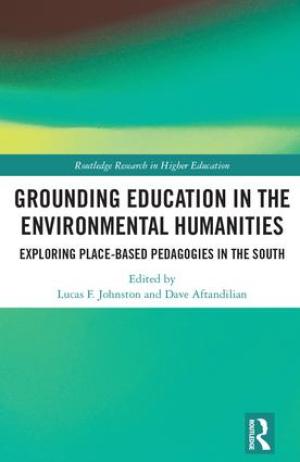
This edited volume draws together educators and scholars to engage with the difficulties and benefits of teaching place-based education in a distinctive culture-laden area in North America: the United States South. Despite problematic past visions of cultural homogeneity, the South has always been a culturally diverse region with many historical layers of inhabitation and migration, each with their own set of religious and secular relationships to the land. Through site-specific narratives, this volume offers a blueprint for new approaches to place-based pedagogy, with an emphasis on the intersection between religion and the environment. By offering broadly applicable examples of pedagogical methods and practices, this book confronts the need to develop more sustainable local communities to address globally significant challenges. (From the Publisher)

I spent most of my early teaching online trying to figure out how to make key aspects of residential teaching and learning—interactive lecturing, organic discussion, respect for diversities—possible in online contexts. I’ve sometimes wondered: “Will teaching online at some point begin to enhance what I think I already know about teaching well residentially?” The answer is yes. And the scope is surprising. Most educators work out their teaching pedagogy and practices in residential spaces. How educators teach is shaped by how we were educated, mentored, and seasoned by residential teaching practices. So it is natural to picture a one-directional flow of impact: finding adaptive ways to bring the best of good residential teaching into online course design. Yet the enhancements can flow in reverse, making room for fruitful bi-directional cross-fertilization. There is more to say, but here is a big picture view to whet the appetite. Supporting More Equitable Conversations: Teaching online has matured the strategies I use for fostering more robust and equitable conversations in the residential classroom. Discussion dynamics online become more democratic when each student is equally invited and expected to contribute to conversation. In those moments, the peer-to-peer learning intensifies because all voices are heard even in the midst of sometimes hard gender and racial dynamics. In residential spaces, minority, international, and women students frequently aren’t given adequate space to enter into large group conversations. And some of the brightest male and female students process internally or in writing. I know the power of each student’s voice because I read assignments. But the most trenchant student perspectives in a residential course are often not heard by peers. Online teaching has prompted me to experiment with residential teaching strategies that mimic the more democratic online discussion. One successful strategy is to invite every student to write three sentences on a discussion topic; then open the discussion with each student selecting and reading the sentence of their choice. Another tactic is to have a less vocal student “unlock” a discussion with a first word on the topic, and another less vocal student “close” the conversation with the concluding word. Resourcing Complex Life Contexts: Online teaching has also widened my view of the resources students bring to a residential classroom from their own backgrounds and life contexts. Online course assignments and learning activities ask students to connect what they are learning to their professional, personal, or cultural contexts. This makes learning more meaningful and applicable, and expands the contextual awareness of both peers and educators. Residential classrooms are full of the same kinds of resources which often go untapped. I have become more intentional about utilizing free-writing moments in class or pair and share opportunities for students to connect learning to their life contexts. In residential course assignments I am now more explicit about expecting and rewarding innovative connections to life contexts that expand the contextual awareness of the entire class. Prioritizing Desired Competencies: Teaching online has also challenged me across teaching contexts to be more explicit not only about what I want students to know, but what I want to see students be able to do. For example, in an online theology course I want students to learn how to respectfully engage one another online around complex aspects of Christology. I realized I had a similar “hidden” objective in the residential version of the course which is now in the syllabus. Prompted by online experimentation, I have also reframed some residential course objectives as desired competencies a student must demonstrate by the end of a course. For example, I added three prayer competencies in a residential course on Trinitarian themes: a well-crafted pastoral prayer, a memorized scriptural benediction, and an unscripted blessing and anointing. In these competencies, students could see the beauty and pastoral impact of Trinitarian language. And I could celebrate and more accurately evaluate not only maturing knowledge but also new capacities and skills. Respecting Complex Life Contexts: In residential courses I am now more intentional about respecting students’ time by selecting strong but accessible readings, scaffolding assignments with straightforward expectations, and affirming good communication around the life challenges impacting their learning. Online courses are tailored to professional and working adults who must multitask across layered responsibilities: child or elder care, volunteer work, job commitments, full or part-time pastoral leadership, and graduate theological education. I remind students online that my own life is similarly complex. Mutual kindness and reasonable expectations are essential; I do not expect them to be online 24/7 and I deserve the same consideration. This has alerted me to the ways in which all of my students, including residential, are adults with complex life commitments and circumstances. I need to honor time on all sides and promote clear and open communication in both kinds of teaching spaces. These are some of the ways fruitful bi-directional cross-fertilization can happen between online and residential spaces of teaching and learning. There is much more to say. Stay tuned.
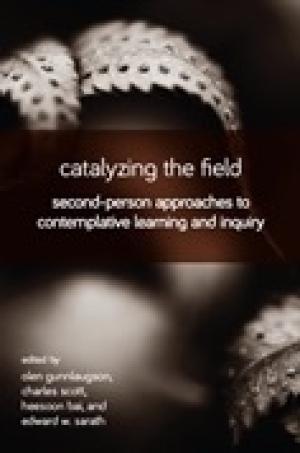
A rich collection of essays about the inner, shared experiences of participants engaged in second-person approaches to contemplative practice. Catalyzing the Field presents a diverse series of applied case studies about the second-person dimension of contemplative learning in higher education. As a companion volume to the editors’ previous book, The Intersubjective Turn, the contributors to this book explore various pedagogical scenarios in which intentional forms of practice create and guide consciousness. Their essays demonstrate that practice is not only intellectual, but somatic, phenomenological, emotional, and spiritual as well. Along with their first book, Contemplative Learning and Inquiry across Disciplines, the editors craft an essential body of work that affirms the fundamental importance of contemplative practice in institutions of higher learning. (From the Publisher)
A 2018 course by Ingie Hovland at the University of Georgia investigates the origins, course, and contemporary forms of Christianity in Africa. Issues in missionology and colonialism are considered.
Ground TransportationAbout a week prior to your travel you will receive an email from Beth Reffett (reffettb@wabash.edu) with airport shuttle information (pdf). This email includes the cell phone number of your driver, where to meet, and fellow participants with arrival times. Please print off these instructions and carry them with you.
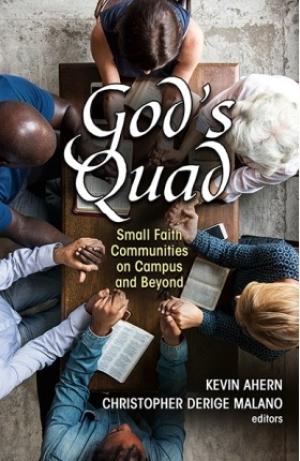
This edited volume of fifteen chapters and six appendices provides a thought-provoking study of Roman Catholic small group ministries on college campuses and in parish settings. The authors represent a diverse sample of laity and clergy who are serving in a variety of settings in Africa, Asia, Europe, North America, and South America. The two editors, Ahern and Malano, share a background in the International Movement of Catholic Students (IMCS – Pax Romana). Ahern currently serves as an assistant professor of religious studies at Manhattan College, and Malano is the pastoral administrator of the Newman Center at the University of Hawai’i – Manoa. They believe that the answer to the question, “where is God on the quad?” is “in small faith groups and student communities” (xvii). God’s Quad includes an Introduction, three sections, and appendices. In the Introduction, Ahern and Malano explain their three goals for this text. They write, “first, we want to draw more attention to the needs and realities of the ‘student church’…. the second aspect of this project is to highlight some of the ‘good news’ stories and best practices of small student groups… [and] the third and perhaps most important aspect… is to provide concrete and practical tools for student leaders and chaplains to build and strengthen small student communities” (xx, xxi, xxii). Part I, Revitalizing the Student Church, offers two chapters that examine the potential of small group ministries in light of Pope Francis’s writings on renewal. Ahern explores four key foundations – empowering, ecclesial, encompassing, and engaging – that he argues are necessary for effective student organizing and evangelizing. Listening is another important concept. Healey argues, “be a listening church first and a teaching church second… what if we really listened to youth and young adults – their concerns, needs, doubts, questions, criticisms, burning issues, hopes and dreams?” (17). The five chapters in Part II present global perspectives on Catholic student small group communities in Italy, Peru, India, Mali, and Eastern Africa. Part III complements Part II’s global views with North American perspectives from Boston College, Duke, the University of Hawai’i, Manhattan College, Purdue, as well as models of small group ministry at Catholic Relief Services and the Newman Catholic Center of Sacramento. These multiple case studies examine a variety of settings and models that illustrate the appeal and flexibility of these approaches. In addition, Karoue and Manola’s epilogue compares and contrasts many of the concepts in the book and brings it to a very successful conclusion. The editors also include five appendices with resources for small student groups including models for theological reflection. Ahern and Malano are to be commended for producing an engaging volume that is consistently of high quality across the various chapters, a rarity in edited volumes, as well as for providing geographical and background diversity. This is a well written, insightful volume that deserves to be included in theological libraries and in the collections of anyone who works in campus ministry, small group ministry, or who teaches these subjects.
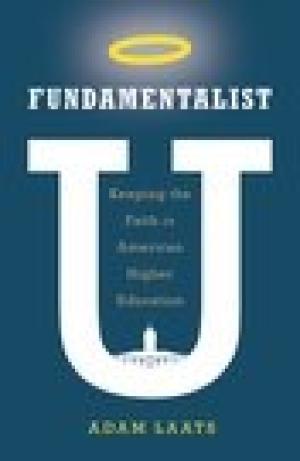
The aim of Fundamentalist U is to “offer a more complete history of fundamentalist and conservative evangelical higher education” including the daily functioning of evangelicalism. The schools studied include Wheaton University, Gordon College, Biola University, Moody Bible Institute, Bob Jones University, and Liberty University. The task at all these schools is to balance academic legitimacy while maintaining reputations for religious purity. Laats defines the (evolving) distinctives of Christian fundamentalism and evangelicalism; outlines what it has meant for these schools to be “real” colleges or universities; demonstrates how the schools function as centers for both evangelicalism and fundamentalism; and examines the methods, models, and tools they have used to teach new generations of students. The distinctive realm of Christian fundamentalism includes an interdenominational religious network of K-12 schools, colleges, universities, and Bible institutes dedicated to the promulgation of orthodox Christianity and to “remaining true to the supernatural truths of real religion as revealed once and for all in the pages of an inerrant Bible” (5). It means maintaining a belligerent stance against modernism, high levels of authority vested in personalities and charismatic leaders, a defense of Whiteness, and rigid positions on race which are elevated into tests of loyalty. The distinctives of Christian fundamentalism (for example, conservatism) include a policing of all sexual behavior including homosexuality (which is framed as the ultimate sexual sin); traditional cultural attitudes around gender, family structure, and sexuality; and a constant monitoring of faculty and students regarding orthodox belief and action, in order, in part, to maintain their donor base, please fundamentalist parents, and ensure a regular flow of new students. Laats examines evangelicalism’s evolution into neo-evangelicalism, characterized by a willingness to critically examine beliefs, preparing students for missionary work, and the grafting of small government, free-market ideologies onto theology. Changing ideas about civil rights and racial equality forced schools to admit that racial segregation was an important part of evangelical character, that racial integration was “anti-Christian perversion” and that, in the 1970s, a fear of miscegenation and opposition to school desegregation orders fueled the formation of thousands of new K-12 Christian schools. Laats also outlines how the six schools studied became important intellectual centers for religious and political conservatism. The first unfortunate aspect of the book is that moderate black, brown, and white believers who are part of the evangelical tableau are not characterized. Second, a short section on what racism, anti-blackness, and white supremacy meant and still mean for African Americans is a much needed addition. That is, an acknowledgment that the toxic mix of equating whiteness with true Americanism, unqualified support of war, and the easy inclusion of conservative political orthodoxy with theology would have provided some ballast that most students and teachers would find useful pedagogically. Still, this is an excellent introductory text on (white) Christian fundamentalism and evangelicalism. It is well-researched, well-written, and a pleasure to read.

George Bernard Shaw, recipient of the 1925 Noble Prize in Literature and award-winning Irish playwright, famously said: “The single biggest problem in communication is the illusion that it has taken place.” As I reflect back on my years of online instruction, I confess: I’ve made this mistake. I often assumed that students understood a post, an email, or a video I’ve made when they did not. Harder still is letting students know that the instructor is “on their side” and wishes their every success. Born from trial and error, here are my top 5 suggestions on the most effective ways for teachers to communicate with students online. 1. Make first contact and do it early The worst mistake I think I ever made was sending my greetings to students on the first day of class. It’s too late. Students need a few days to get a sense of the course, read the syllabus, ask questions, and carve sacred space in their busy schedules for the hours they need to study. Trying to do all these things and start on the first module when the term begins never works out well. Instead, I contact students weeks before the beginning of classes. I make a video introduction so they can see and hear that I’m a “live” person. In the video (a short 2-3 minutes), I give my greetings, say something about myself, share a vision of the course and why it’s important, and keep “business matters” to a minimum. Strategically, I set up a pre-class orientation module for the students to work through prior to the start of class. There they see the assignments at a glance and get a walk-through of the course shell. When the term officially begins, they are ready to jump into the first module. 2. Have office hours every week and make them consistent In an age when using Zoom, Big Blue Button, Skype, or other video conferencing tools is not only convenient but free, I recommend setting up regular office hours when a student can count on a specific day and time each week that you are online to “meet.” I send out a Doodle poll early so students can indicate their free hours in a given week. I try to pick two 1-hour time slots when most students can join. Then every week, I’m online in Zoom or Big Blue Button waiting for students to drop into the video conferencing session. While I wait, I can grade, write emails, and get tasks done. But as soon a person enters the session, I drop everything and we talk. Someone almost always shows up. Office hours assure the student that the instructor is available and present. It lets students know you want to help. It also gives me a pulse of how students are doing. Are they drowning in, or sailing through, each module? Meeting them through office hours is a quick reality check 3. Receive advice and implement suggestions when you can At times, students have great suggestions. It may be the case that the suggestion cannot be implemented right away, but if it can be done, I try to do it. It could be as simple as extending a deadline on a particularly tough assignment or providing samples of good bibliographies. Whatever the suggestion, implementing it gives a needed sense of ownership to my students 4. If you make a mistake, don’t be afraid to admit it and offer a fair resolution I remember one time when I was not informed that more than half my class would be taking a week off in the semester to attend a conference sponsored by my seminary’s denomination. There was no way these students could attend the conference and complete the next module. I saw no way forward but to contact each student and apologize for not incorporating the conference in the class schedule. I talked with academic services and with their help adjusted the course to accommodate the conference week. I dropped one major assessment. It was messy but the students were graciously cooperative. Whew! 5. Keep it positive Students get discouraged easily. If they are feeling the course is too hard, we work out a plan to move forward, whether it’s extra tutoring or adjusting study habits. The most important thing is to keep it positive. Hope inspires perseverance. Perseverance is what we all need to succeed.

Last year, my university offered online instructors two video tools on a trial basis: Flipgrid and VoiceThread. While VoiceThread’s features did not suit the classes on my schedule, I might incorporate it with advanced students in the future. Flipgrid, a Minneapolis-based educational startup (acquired in mid-2018 by Microsoft), uses an intuitive interface to allow students to create and upload videos on “grids” established by an instructor. First adopted in K-12 settings, the social media savvy generation can navigate the process with ease. It intrigued me enough to use it in both summer and fall General Education classes. As a mechanism for class introductions, Flipgrid is a slam dunk. Although my previous practice of asking students to post a brief introduction with a photo worked just fine, I enjoyed receiving candid video footage of students in their dorm rooms or apartments, as well as with their roommates and pets. The mobility of the app gave the students options and many decided to have fun. Other backdrops included hiking on the Blue Ridge, work sites, or even in the car with friends (no videos were filmed while driving). Moreover, all participants can easily access other classmates’ videos and they got interactive without being instructed to do so. Another helpful function was as a conduit for questions about the class or the parameters of an assignment. Instead of fielding a number of separate private emails on the same topic, students made video queries and I posted answers for everyone to see. Using Flipgrid as a discussion board produced more of a mixed bag. First, the positives. Even though the videos were graded, I wanted lower stakes assignments than writing, and many students embraced that informality. I could therefore hear a student processing the questions I posed and thinking through the assigned materials. Because I also asked them to engage with the video of another student, I caught glimpses of how they negotiate differences. Additionally, the platform allowed me to build a scored rubric suited to the assignment and I could send individual responses (point totals and comments in writing and/or video). I liked that videos showed the personal. For instance, listening to posts with young children screaming in the background made the challenges of parenting as a student obvious. And Thursday, Friday, or Saturday night contributions, with folks getting ready to head out the door on dates or to parties (or, sometimes, coming back in) taught me a great deal about the social scene as well as fashion in clothing, hair, and jewelry . . . and preferred drinks which were quite visible. But it did not prove all smooth sailing. Many students carefully curate their online identities and want control over their public personas. Even in Flipgrid’s private and password--protected space, evaluations indicated some students experienced anxiety about their self-presentation in this format. Unexpectedly, one way this concern manifested was through an uptick in plagiarism. While students on traditional threaded discussion boards sometimes cut and paste content without attribution, I never anticipated videos featuring students reading directly from websites as if the words were their own. But they did, and did so in significant numbers. My conversations with offenders about this behavior indicated fear about appearing less than knowledgeable in ways that amplify differently from a typed post. Workload also became a problem. While I thought video posting would prove less onerous for students, I hoped it might equate to grading traditional boards for me. Again, the results varied. Many students appreciated the chance to make contributions in this new format, but others reported choosing an online course because of a preference for writing out thoughts and were disappointed not to have that option. Still others refused to post a video until they thought it looked and sounded perfect, resulting in lots of takes and time sunk into the production. As for me, although I limited all videos to a maximum of 3 minutes, that meant listening to 2 posts per student weekly could run three hours straight for a single class of 30 students–extended, of course, by the need for breaks and to compose and enter feedback. It was the latter that truly took up time because grades assigned in Flipgrid did not automatically integrate into the learning management system gradebook. Instead, I recorded separate grades in Excel and then again in Moodle gradebook for the students (in addition to emailing my feedback through Flipgrid). Many days toward the end of the term, I longed for my old threaded discussion boards I could grade in an hour or so. Still, I do not regret being experimental with a new technological option. Learning how to incorporate a new pedagogical tool effectively always takes time. I will not abandon Flipgrid, but I do plan to modify my future use. It’s certainly a keeper for introductions and class questions. But instead of using it like a traditional discussion board, I am mulling over incorporating grids at the completion of a unit, or perhaps after a reading or a video, in order to allow students space to pose questions about an idea or a theory where they need additional clarification or to push on something I may not have stressed. I can also see assigning a student to make a short video presentation on a given topic where others will ask questions or pose challenges. Finally, using this tool helped me as a teacher. I became less uptight about posting only perfected content made when I was dressed in a certain manner and every hair was in place. In fact, I often posted from wherever I happened to be, including on the treadmill at the gym, while at the grocery store, and even from a friend’s hospital room. My students got to see me as a person with a life, too. That kind of interaction can get lost online. So even when this new toy failed to live up to my hopes, or I failed to use the resource to its best advantage, it nudged me to keep stretching as a teacher, to seek more effective ways to communicate. That outcome is never a bad one.